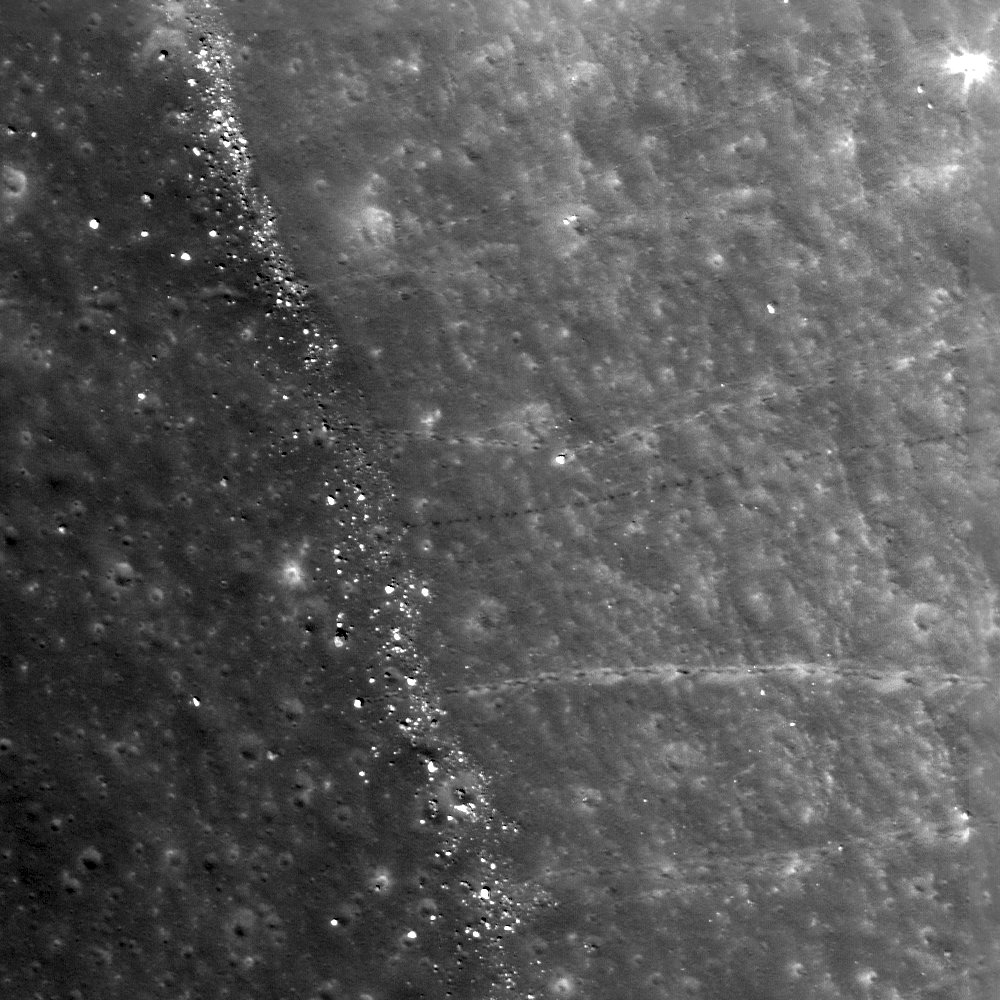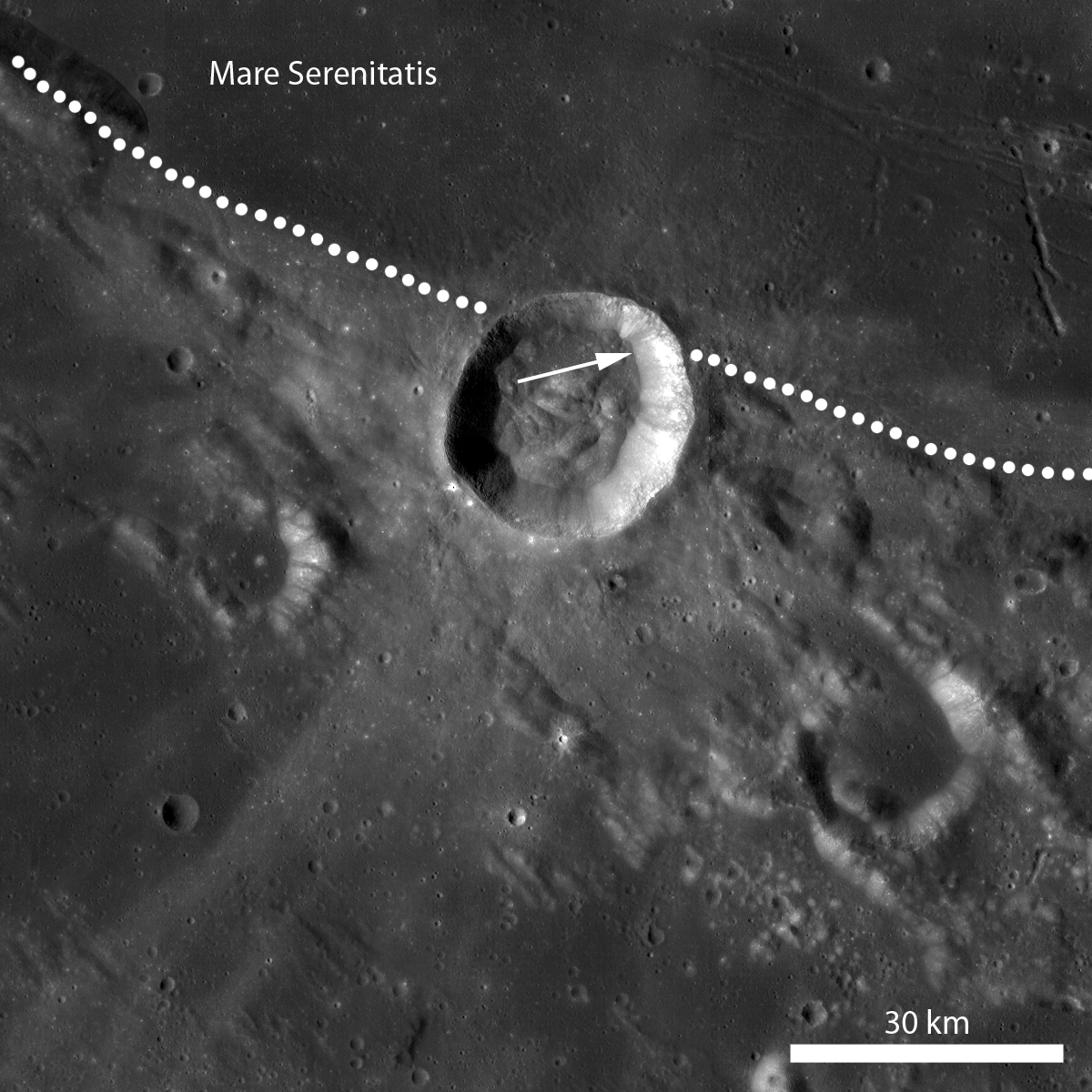
Most boulder trails are relatively high reflectance, but running through the center of this image is a lower reflectance trail. This trail is smaller than the others, and its features may be influenced by factors such as mass of the boulder, boulder speed as it traveled downhill, and elevation from which the boulder originated. For example, is the boulder trail less distinct than the others because the boulder was smaller? What about the spacing of boulder tracks? The spacing of bounce-marks along boulder trails may say something about boulder mass and boulder speed. But why is this boulder trail low reflectance when all of the surrounding trails are higher reflectance? Perhaps this boulder trail is lower reflectance because the boulder gently bounced as it traveled downhill, and barely disturbed a thin layer of regolith? The contrast certainly appears similar to the astronauts' footprints and paths around the Apollo landing sites. Or, maybe the boulder fell apart during its downhill travel and the trail is simply made up of pieces of the boulder - we just don't know yet.
What do you think? Why don't you follow the trail to its source in the full LROC NAC frame and see if you can find any other low reflectance trails.
Related posts: Menelaus' distinctive rays
Small crater at the southern rim of Menelaus
Southern rim of Menelaus Crater
Published by Lillian Ostrach on 29 October 2010
